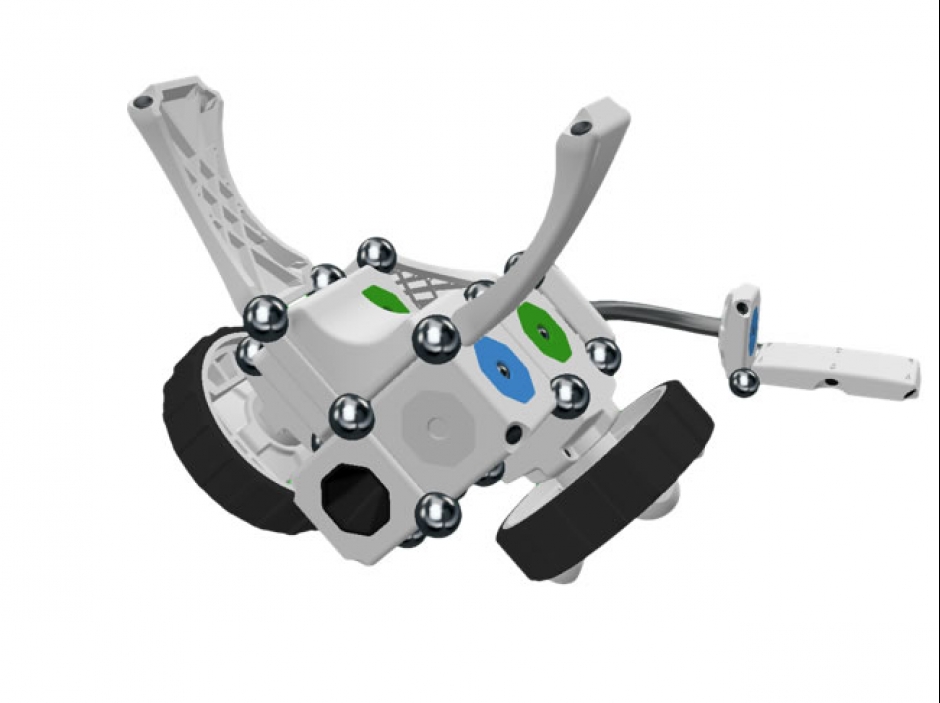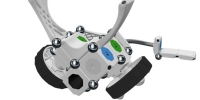I've been a fan of the Lego Mindstorm Robotic Construction System since version 1. However, it does have limitations. It is expensive, complicated, and designed for kids 14 and up.
When I heard that Modular Robotics had launched a robot building set for less than half the price of the Mindstorm kit and that it was directed at kids 8 & up I was very excited. Moss aims at being to robotics what LittleBits is to electronics: a safe, solderless, way to play with 21st century technology without getting electrocuted. We tested out one of its starter sets and had mixed results.
Like the LittleBits electronic kits, the Moss Robot Construction System uses plastic modules with embedded circuits and motors that can be connected by magnets. Most of the components are cubes that are held together with steel ball bearings. The magnets are strong enough to hold the parts together much of the time, but we found that you had to be very careful when picking up a robot lest it break apart in your hands. The magnet system also makes tweaking the way parts fit together difficult. Remove a piece to reorient it and you may find that your robot implodes. Of course, another issue raised by the ball-bearings is that they could be very dangerous to kids (and animals) that ingest them accidentally or on purpose.
Also, like the original LittleBits sets, you don't get a lot of pieces in the starter set, so there are real limitations out of the box of how your robot might fit together. Yes, you can (as with LittleBits) buy additional pieces, but this is a system that can get expensive very fast. The larger, programmable set, is nearly five hundred dollars.
The most serious issue we had with the system is the manual. The first, and very simple, model is well explained. However, once you're past that there is little explanation of how things work. Part of the fun, one might imagine, is figuring out how the blocks interact with each other. However, a key concept (hardly explained) is that pathway blocks can only make ciruits that carry data or power, but never both. The trick (not explained) is to use special blocks that bypass either power or data.
Another somewhat odd aspect of the toy is that the blocks are not identified with words (as they are in LittleBits). Instead you have to use color coding. We found it often difficult to discern which block faces were blue and which green. Also, the manual refers to brown cube faces, but in the kit (and in the illustrations in the manual) they are purple. No, we are not color blind.
While testers were able to follow the instructions to build the examples, they were very frustrated when they tried to create there own designs.
One of the interesting things about the system is that, because of the way the connectors mount, the designs often call for blocks being built up on an edge, rather than flat (they way you would with blocks or bricks). This calls for a high degree of visual-spacial acuity. It is often difficult to tell which end as you follow the instructions. This was either part of the fun or the cause of incredible frustration to our testers. While I'm sure that somewhere out there there are eight year olds that can use the Moss system, I think they are much more the exception than the rule.
Building from the plans in the manual (and other recipes online) is much easier than designing a robot from scratch. In fact, we had parent and adult testers who couldn't do it after hours of attempts.





